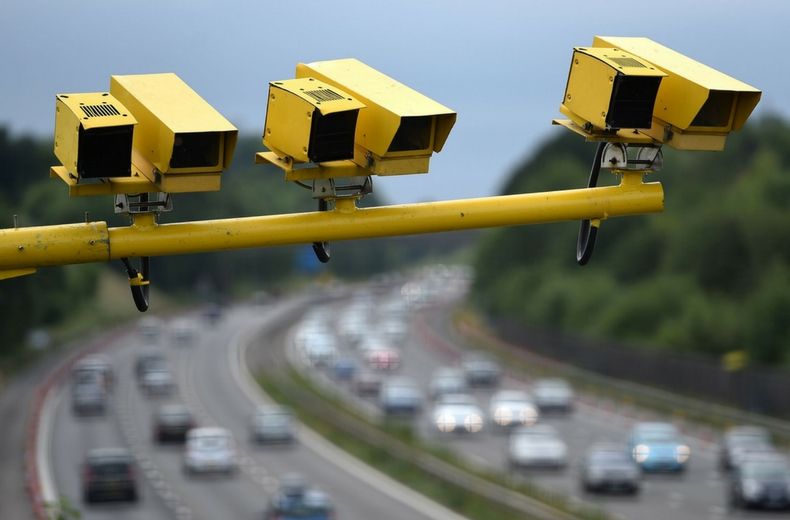From average speed cameras to automatic number plate recognition (ANPR) cameras, there are a number of different types, each with different purposes.
Here we run through the functions of the cameras on our motorways and how they keep our roads safe.
HADECS 3
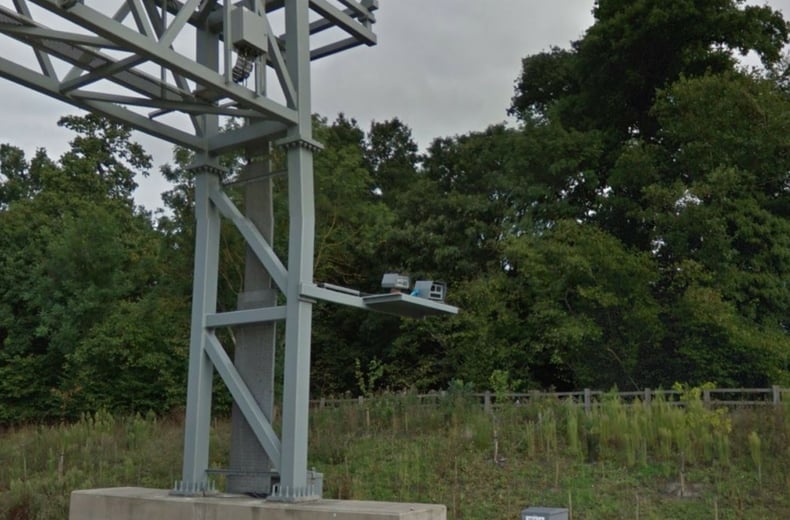
The latest widely-used piece of technology in motorway speed cameras is called HADECS 3 – this stands for Highways Agency Digital Enforcement Camera System 3.
The cameras are frequently used on smart motorways to enforce variable speed limits; and as a result are sometimes called variable speed cameras (differentiating them from SPECS average speed cameras).
These systems are often mounted on poles at the side of the motorway, and are largely painted in grey: only the camera units themselves sometimes receive yellow markings.
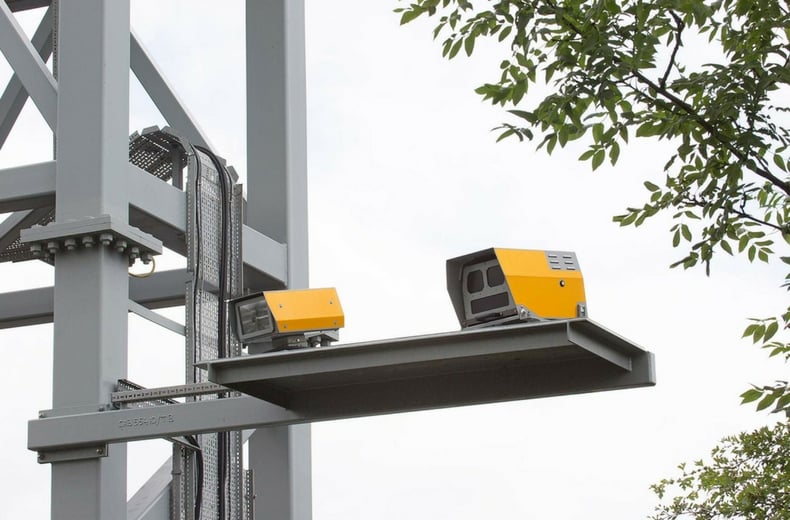
Although they are positioned at the roadside (for ease of maintenance), they can still cover up to five lanes of a motorway.
They are thus much more efficient than older systems.
The dual radar system is effective in all weathers, and they operate fully digitally for fast processing of speeding penalties.
A HADECS 3 system is made up of the camera unit itself, and an additional ‘external aspect verification’ (EAV) structure located in advance of the camera.
This system, comprising three or four individual small camera units, captures speed limits displayed on variable speed limit gantry signs, automatically adjusting the HADECS 3 accordingly, allowing this system to operate in real time.
SPECS
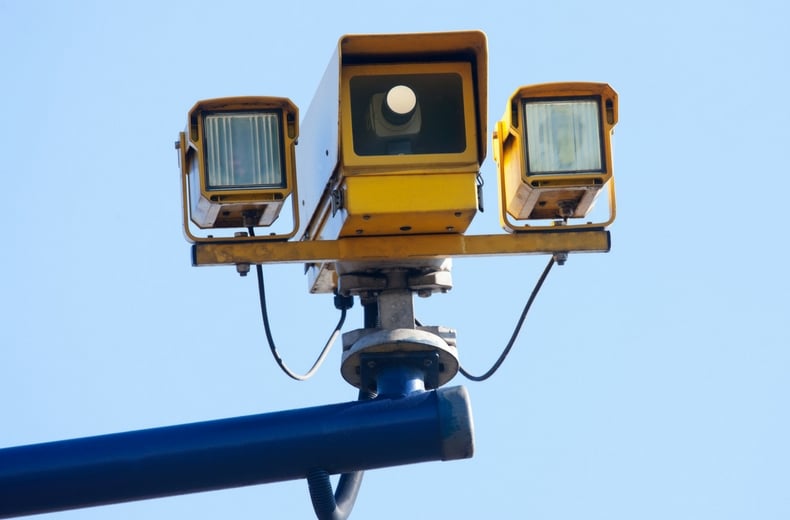
SPECS cameras are also known as average speed cameras.
They are are almost always found through motorway roadworks and are equipped with ANPR (Automatic Number Plate Reading) technology and infra-red illuminators, allowing them to work in all conditions, 24 hours a day.
A SPECS setup, which is often painted in bright yellow, is made up of video cameras in at least two locations, a minimum of 0.2km apart.
Each camera records a date and time stamp, a computer then works out the average speed, with the ANPR and photographic evidence allowing a speeding penalty to be issued.
Many consider SPECS cameras to be more effective in managing speed as they do not capture speed at an individual location, but average out speed between the two camera zones, meaning drivers are obliged to maintain speed limits over much longer distances.
That's why SPECS cameras are almost always found through motorway roadworks.
The SPECS name is derived from the company that makes them – Speed Check Services Limited.
The same firm that makes SPECS also offers an alternative average speed camera system called Vector.
They are rare on motorways though: they are usually found on bidirectional roads or dual carriageways.
- Speeding fines - how much you now have to pay
- Traffic cameras - what you ned to know
- Are you a middle-lane hogger? Here are the facts
Mobile cameras
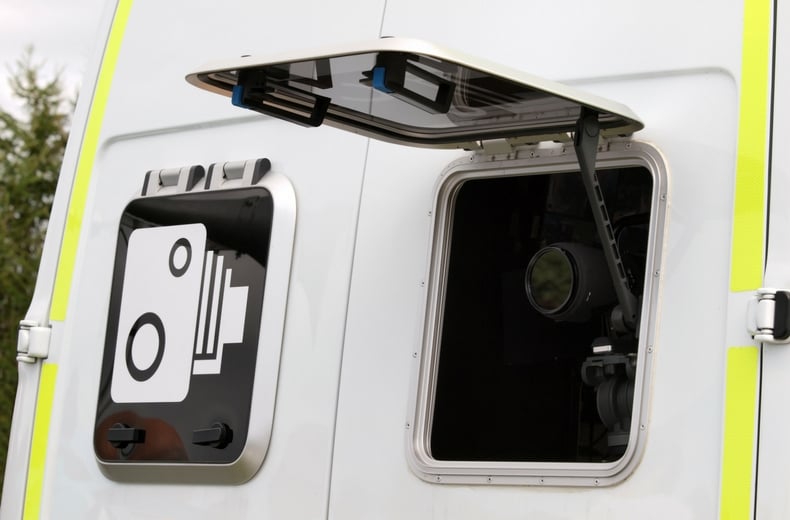
These are among the most distinctive motorway cameras: often, a police car or van will be parked on a bridge over a motorway; officers within will detect speeding motorists either with a radar or laser gun, or with video speed monitoring technology.
There are no set locations where mobile cameras are used, police will often return to a location where there appears to be a problem with speeding.
Prosecutions are issued either through the post or, occasionally, the more old-fashioned method of officers waiting a little further up the road to track down the speeding motorist and prosecute them on the spot.
Traffic cameras
These are CCTV cameras monitored by Highways England and used to monitor traffic, not to issue speeding fines.
They’ll alert the Highways England if there’s an incident or congestion on the motorway, so that emergency services can be sent out if required – and local and online media can issue warnings.
Visually, they look like ordinary CCTV cameras; they’re mounted in tall poles or overhead gantries.
They will be painted grey or white; they will not be marked in yellow as they merely capture footage rather than detecting speed.
READ MORE: How to use traffic cameras to your advantage
Police ANPR
ANPR cameras are operated by both the police and Highways England. Police ANPR cameras come in varying guises: from those in fixed locations to those used in police cars.
They automatically read every vehicle number plate passing them and instantly check it against a database of records of vehicles of interest.
This can trigger an alert if a vehicle known to be linked to robberies or drug use passes the camera, for example.
It can also alert officers if a car without MOT, tax or insurance is used on the public road.
Data gained by ANPR cameras can be stored for up to two years.
This is useful, for example, if a person goes missing, as it lets police trace their location if they’ve travelled by car.
It can also highlight when known criminals have been in the area of a crime when it took place.
- RAC Temporary Car Insurance from 1 hour to 30 days
- RAC Learner Driver Insurance from 1 day to 5 months
Highways England ANPR
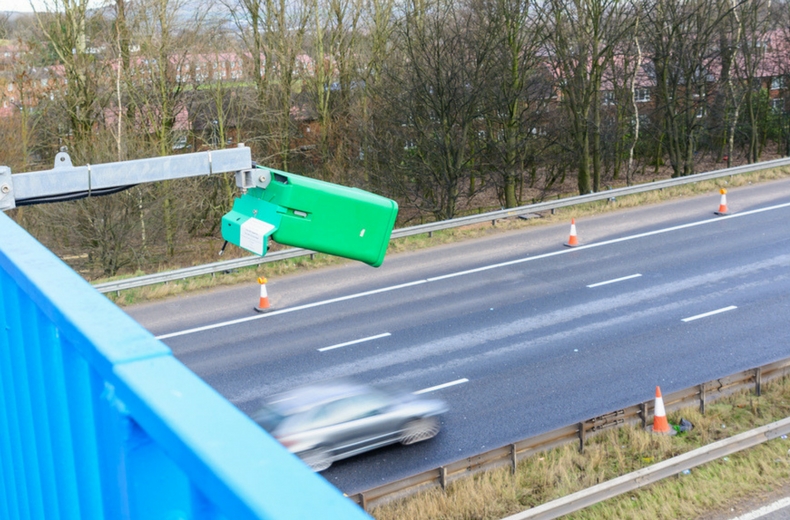
Highways England uses 1,100 ANPR cameras across the UK’s motorway and trunk road network to monitor traffic flow and provide estimated journey times across the network.
While they ‘read’ a vehicle’s number plate, the data is instantly converted into non-unique reference numbers, known as ‘hashing’.
This makes it impossible for Highways England to trace a particular vehicle using its network of ANPR cameras.
The bright green cameras records millions of ‘tags’ a day, passing this information onto the National Traffic Operations Centre in five-minute intervals.
TrafficMaster traffic monitoring cameras
Another type of camera sometimes seen on motorways is painted or finished in dark blue.
These are operated by the traffic-monitoring company TrafficMaster, and are used exclusively to observe traffic.
Traffic flow speeds are broadcast from the units and used to detect traffic jams.
The information is often used in radio traffic alert bulletins – received by pressing the ‘TA’ or ‘TP’ button on your car stereo – and sometimes by in-car sat nav systems.
Legacy cameras – Gatso
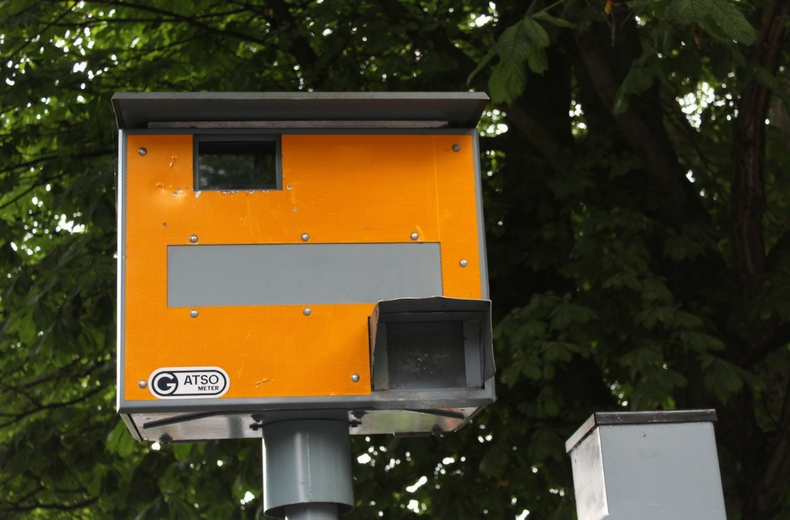
The Gatso is the most common type of speed camera.
These are the bright yellow ones you’ll commonly see at the side of roads in the UK, but they were also used on overhead gantries on motorways.
Commonly, many motorway Gatso systems have been replaced by HADECS 3 technology, although the distinctive yellow-marked housing remain on many motorway overhead gantries – as do the tell-tale ‘line’ markings on the carriageway.
As the ‘dummy’ boxes and lines are still a visual deterrent to speeding, there is little incentive to remove them.
HADECS 3 systems are frequently positioned in the same locations as legacy Gatso cameras: the tell-tale flash will thus come from the side of the motorway, rather than overhead.
The National Police Chiefs Council recommends the minimum speed for prosecution is 10 per cent plus 2mph over the limit, but this is not part of official legislation, this is only advice given to officers to aid them in their discretion on whether or not to prosecute.
Fixed speed cameras have a set trigger for catching people speeding, however, it is unconfirmed what most are set at so it's not worth gambling and assuming they give you 10% or more - never exceed the speed limit.

RAC sale – up to 33% off*
• Roadside cover from £5.49 a month*
• We get to most breakdowns in 60 mins or less
• Our patrols fix 4/5 breakdowns on the spot
*T&Cs apply. †At least 10% of new customers pay this for single-vehicle Roadside (Basic). Not on sale.

Services we offer
- Breakdown Cover
- European Breakdown Cover
- Motorbike Breakdown Cover
- Electric Car Breakdown Cover
- Caravan, Motorhome and Campervan Breakdown Cover
- Business Breakdown Cover
- Van Breakdown Cover
- RAC Approved Garages
- Vehicle servicing
- Vehicle repair
- MOTs
- Mobile mechanics
- RAC Tyres
- RAC Approved Dealers
- RAC Shop
- myRAC app

